Top things to do in Tangier
In this post, we explore the top things to do, attractions, historic sites, Old town and other popular places to visit in Tangier. The city is both old and modern with plenty of things to do and see around town.
It’s not so surprising that within the Mediterranean, you can easily get to Tangier, Morocco on a quick flight or ferry ride in no time. Separated to Spain at its narrowest point at the Straight of Gibraltar which is only 14 kilometers or equivalent to 8.7 miles to reach Tangier. You can essentially enter a new country in such an easy ride by ferry or plane. On this short guide, I share how to get there, the history and top things to do in Tangier and the wonderful cuisine and street food you can experience in this exciting city.
It’s easy enough to visit Tangier as a day trip, but you definitely can see more of the city and even use it as a base to explore more areas around Morocco, and I suggest doing that as an introduction to visiting the country.
This guide will give you all the information to plan and experience the best of Tangier and what to see and do around the city.
Tangier things to do – Explore the attractions, history and amazing foods in the city
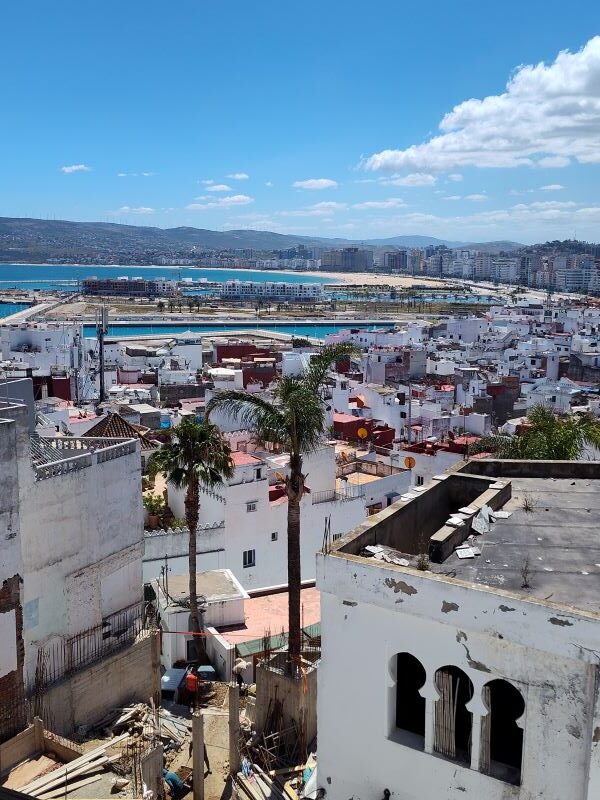
Where is Tangier, Morocco located
Tangier is located in the northern part of Morocco, right where the Mediterranean Sea meets the Atlantic Ocean at the Strait of Gibraltar. It’s just across from southern Spain, making it one of the closest African cities to Europe—only about 14 kilometers away. This strategic spot has made Tangier a key port and cultural crossroads for centuries, blending influences from Africa, Europe, and the Middle East. The city sits on a hillside overlooking the water, offering sweeping views of the strait and beyond.
How to get to Tangier
How to Get to Tangier, Morocco – Outline Form
1. By Air
- Tangier Ibn Battuta Airport (TNG): Located about 12 km from the city center.
- Direct international flights: Available from major European cities like Madrid, Paris, London, and Lisbon.
- Domestic flights: Regular service from cities like Casablanca, Marrakech, and Rabat.
2. By Ferry
- From Spain:
- Tarifa to Tangier Ville: Fast ferries (approx. 1 hour), arrive directly in Tangier’s city port.
- Algeciras to Tangier Med: Longer ferry ride (1.5–2 hours), then a 45-minute drive/taxi to Tangier center.
- Ferry operators: Include FRS, Intershipping, and Balearia.
- Foot passengers and vehicles: Both options available.
3. By Train (within Morocco)
- ONCF high-speed train (Al Boraq):
- Connects Tangier with Casablanca, Rabat, and Kenitra.
- Comfortable and fast – for example, Casablanca to Tangier takes about 2 hours.
- Station: Tangier Ville train station near the city center.
4. By Bus or Car (within Morocco)
- CTM and Supratours: Reliable long-distance bus services from major Moroccan cities.
- Driving: Roads are generally good; Tangier is well connected via highways.
- Car rentals: Available in all major cities and airports.
5. Ride-sharing or taxis (short distances)
- Petits taxis: For short trips within the city.
- Grands taxis: For longer distances or regional travel.
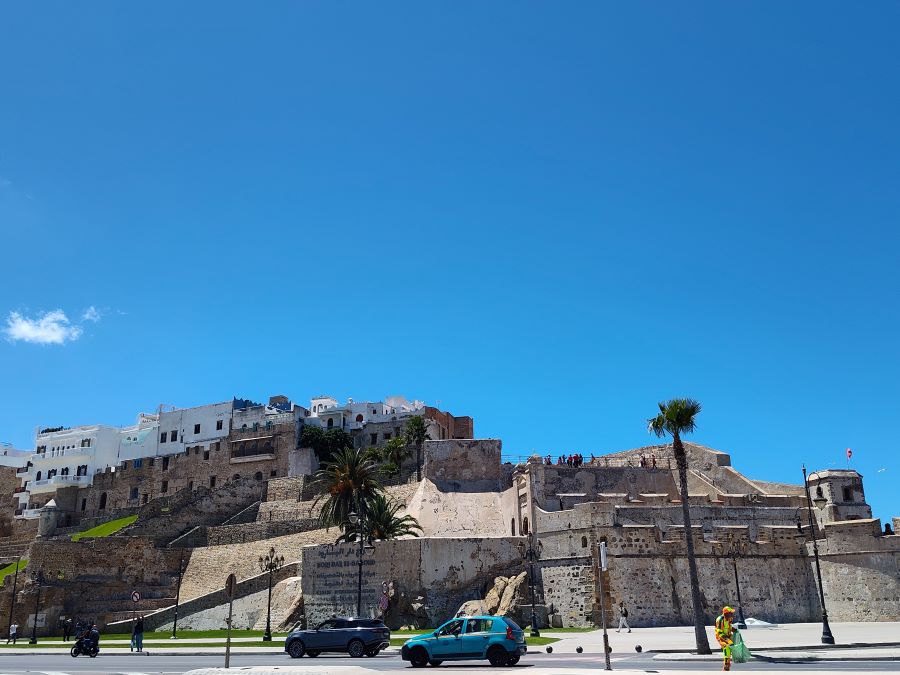
A little history about Tangier
Tangier has a long and layered history shaped by its strategic location at the crossroads of Africa and Europe. It’s one of Morocco’s oldest cities, with roots going back to Phoenician times over 2,500 years ago. Over the centuries, it’s been ruled by Romans, Arabs, Portuguese, and Spanish, each leaving a mark on the city’s culture and architecture. In the 20th century, Tangier took on a unique status as an international zone, jointly administered by several countries, which turned it into a haven for diplomats, spies, artists, and writers. That era gave Tangier a mysterious, bohemian reputation that still lingers today. Now fully integrated into Morocco, the city remains a blend of history, trade, and cultural exchange.
15 Top things to do and attractions in Tangier
Exploring Tangier especially in the Old Town is manageable by walking, getting to the old town is doable by taxi, local bus or even the Hop on Hop off bus system. There’s a lot of interesting sites and attractions to explore in town and primarily around the Old Town or Medina section of town.
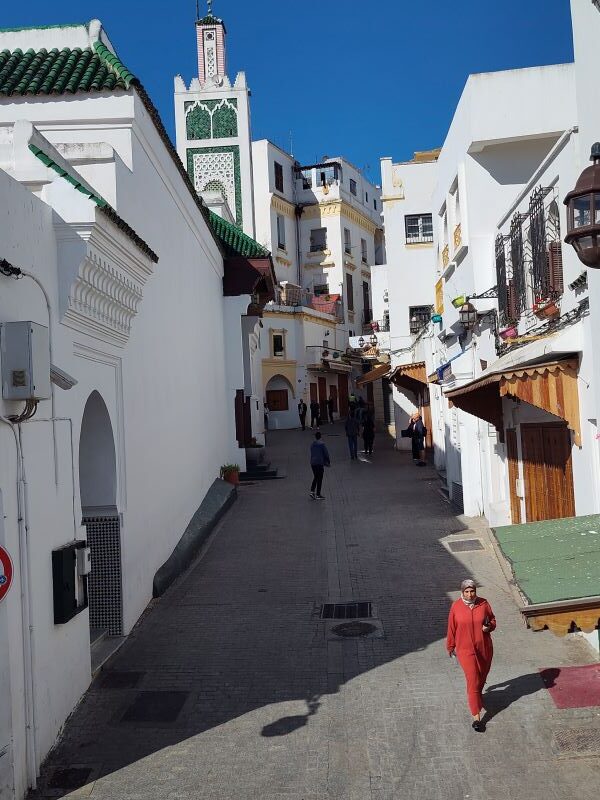
1. Explore the Medina (Old Town)
Exploring Tangier’s medina is like stepping into a different rhythm of life. The old town is a maze of narrow, winding streets filled with colorful shops, local markets, and historic buildings. You’ll find everything from handmade leather goods to spices and traditional textiles. It’s a lively area where locals go about their daily routines and visitors can soak up the energy of street vendors, musicians, and cafés tucked into quiet corners. The medina also offers glimpses of Tangier’s layered history, with architecture reflecting Arab, Andalusian, and European influences.
Even though the major thoroughfares are scrubbed clean and neat, the smaller side streets and unique shops are really authentic and support mom and pop establishments that feature hand crafted or locally produced products, foods or specialty goods.
- Wander narrow alleys lined with shops, cafés, and traditional riads
- Visit local markets for spices, textiles, and crafts
- Stop by the Grand Socco (main square) for local life and people-watching
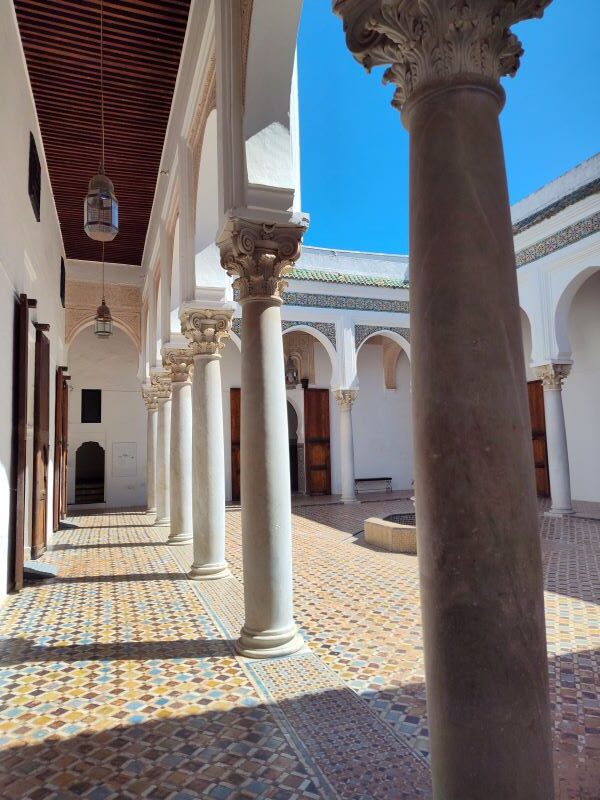
2. Kasbah and Kasbah Museum
The Kasbah sits at the top of Tangier’s medina, offering sweeping views of the city and the Strait of Gibraltar. This fortified area was once the seat of power and still feels like a step back in time, with quiet lanes, old archways, and a calm atmosphere compared to the busy streets below. At the heart of it is the Kasbah Museum, housed in the former Sultan’s palace, Dar el Makhzen. The museum features a collection of artifacts that trace the region’s long history—from Roman mosaics to Islamic art and traditional Moroccan crafts. The palace itself, with its carved ceilings, tilework, and gardens, is just as much an attraction as the exhibits.
This is definitely one of the highlights to visiting the area and worth spending time at the Kashbah. Also, have a meal with views at the surrounding restaurants, it’s great!
- Located at the highest point of the medina
- Offers great views of the Strait of Gibraltar
- The museum, housed in a former sultan’s palace, has artifacts from Phoenician to Islamic periods
3. Tangier American Legation Museum
The Tangier American Legation Museum is a unique and historically significant site tucked inside the medina. It was the first American public property outside the United States, gifted by the Sultan of Morocco in 1821, and it served as a diplomatic post for over a century. Today, it’s a cultural center and museum showcasing American Moroccan relations, along with art, photography, historic documents, and rotating exhibits. The building itself, a blend of Moorish and European styles, adds to its charm, and its role in Tangier’s international past gives it a distinct presence among the city’s landmarks.
- The first American diplomatic property outside the U.S.
- Now a museum with art, historic documents, and cultural exhibits
- Located in the medina and recognized as a U.S. National Historic Landmark
4. Stroll along the Corniche and Tangier Beach
The coastal promenade is fantastic early morning or later in the afternoon to avoid the harsh sun, the city beaches are nice but rarely in use for some reason (At least the times I have visited). The wide expansive white sandy beach is long and covers a large stretch of Tangier’s center with a nice walking promenade area. The stretch of beach is also lined with many cafes and restaurants for traditional, seafood or fine dining venues to enjoy the nice views of the beach area and marina.
- Coastal promenade perfect for walking, especially at sunset
- Access to city beaches and cafés with sea views
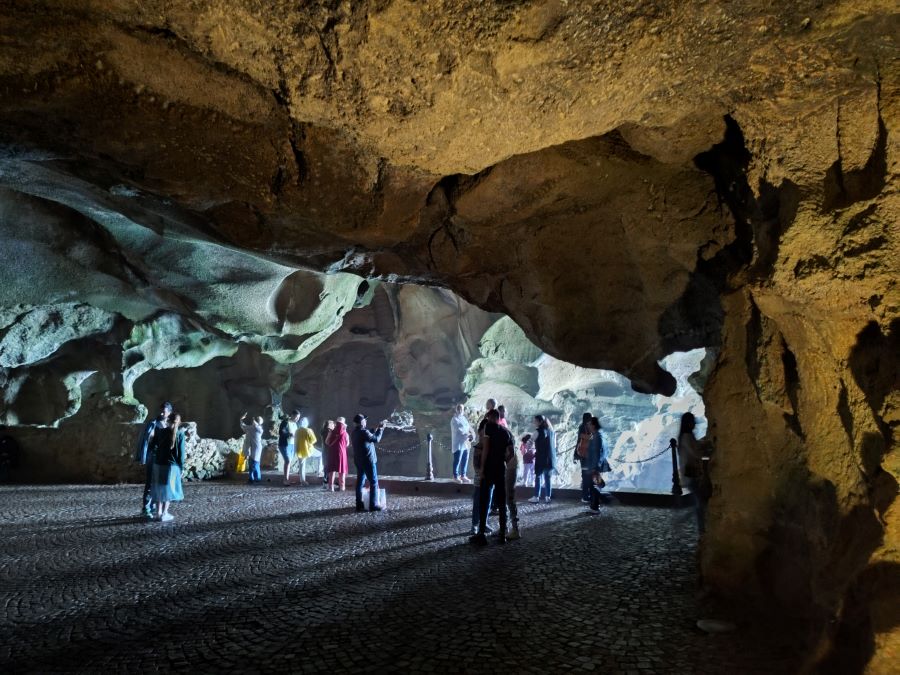
5. Visit the Caves of Hercules
The Caves of Hercules, located just outside Tangier near Cap Spartel, are a popular spot for both their natural beauty and mythological allure. According to legend, this is where Hercules rested after completing his labors, adding a layer of folklore to the already dramatic setting. The cave is partially natural and partially man-made, with a large opening facing the sea that’s famously shaped like the continent of Africa when viewed from inside. During low tide, you can walk around parts of the cave, while the ocean crashing against the rocks outside adds to the atmosphere. It’s a quick and scenic escape from the city, often combined with a visit to the nearby lighthouse and beaches.
I took a hop on hop off bus to visit the area and definitely worth the drive to see some local attractions outside of the city and just enjoy the landscape and coastal areas.
- Located about 14 km from the city center
- Natural cave with mythological ties to Hercules
- Features an opening shaped like the African continent
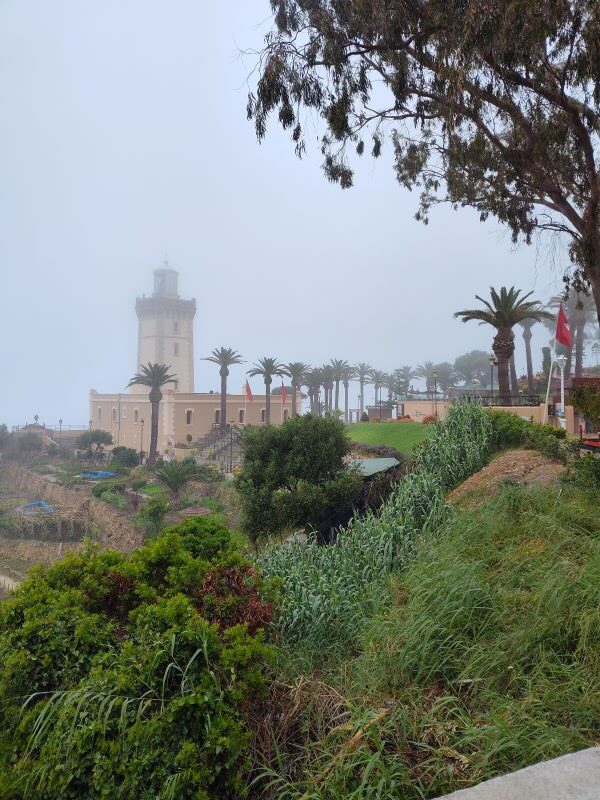
6. Cap Spartel
Cap Spartel is a scenic headland located just west of Tangier, where the Atlantic Ocean meets the Mediterranean Sea. Marked by a 19th-century lighthouse, the area offers panoramic views of the coastline and is a popular spot for sunset watchers and photo stops. Surrounded by pine forests and coastal cliffs, it’s a peaceful contrast to the city, and a good place to take in the natural beauty of the region. There’s also a small café nearby where you can relax and enjoy the view.
It’s an easy day trip to visit the surrounding area and lighthouse. I took the local hop on off bus to explore this attraction and other places to visit in the area.
- Scenic viewpoint where the Atlantic Ocean meets the Mediterranean
- Lighthouse and panoramic sea views
- Good spot for a quick stop or picnic
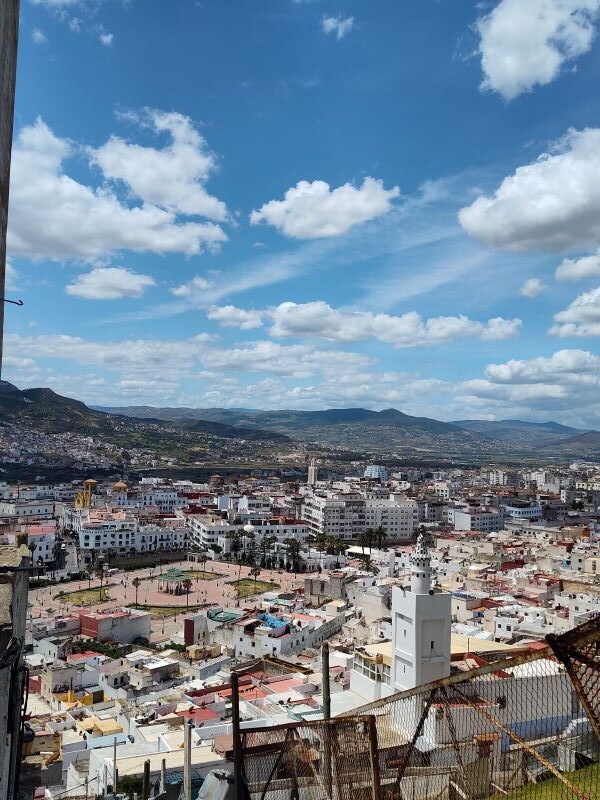
7. Day Trip to Tetouan
A day trip to Tetouan from nearby cities like Tangier offers a fascinating glimpse into one of Morocco’s lesser-known but culturally rich cities. The drive itself is scenic, winding through the Rif Mountains and offering views of the Mediterranean coast. Once in Tetouan, the charm of its UNESCO-listed medina stands out—less commercialized than others in Morocco, it’s a maze of whitewashed buildings, narrow alleys, and authentic local life. You’ll find artisans working in small shops, traditional Andalusian architecture, and lively markets that feel more geared toward locals than tourists. The Spanish influence is still strong here, with signs in both Arabic and Spanish, and a mix of Moorish and colonial-era buildings adding to the city’s character. It’s an easy but rewarding escape for a day, especially for those interested in history, architecture, and an atmosphere that feels authentic and a bit off the beaten path.
- A charming inland town about one hour and 15 minutes away
- Known for its hilltop medina and views of the region
- has a large necropolis worth visiting on the outside of the city walls
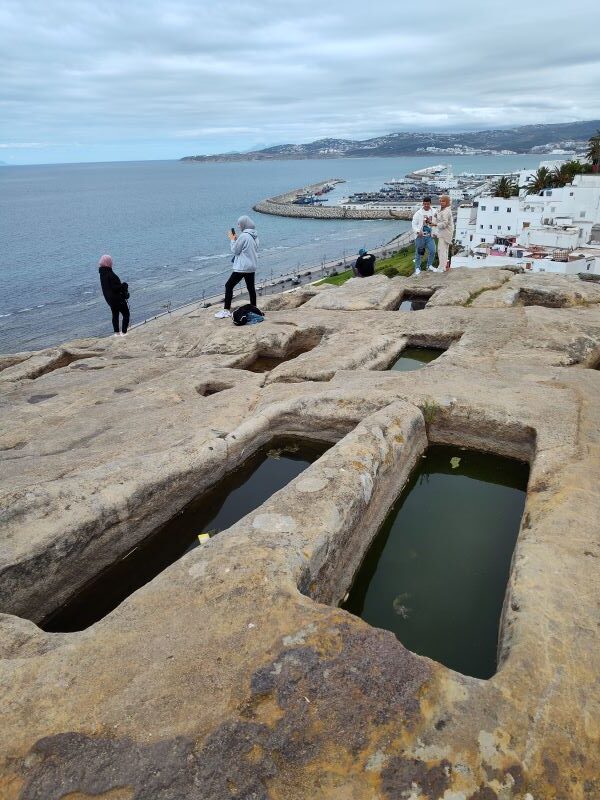
8. Roman Necropolis ruins and burial grounds
In Tangier, remnants of its Roman past can still be seen at sites like the Roman necropolis located near the Kasbah and overlooking the sea. This ancient burial ground features rock-cut tombs carved directly into the stone, some still clearly visible along the cliffside. Though the ruins are modest, the location offers a striking view of the Strait of Gibraltar and provides a quiet, reflective space away from the city’s busier spots. It’s a subtle but meaningful reminder of the long and layered history that has shaped Tangier over the centuries.
- Explore local contemporary art at places like Galerie Conil
- Relax in historic cafés such as Café Hafa, with views over the strait
- Check out this website for more information and details here
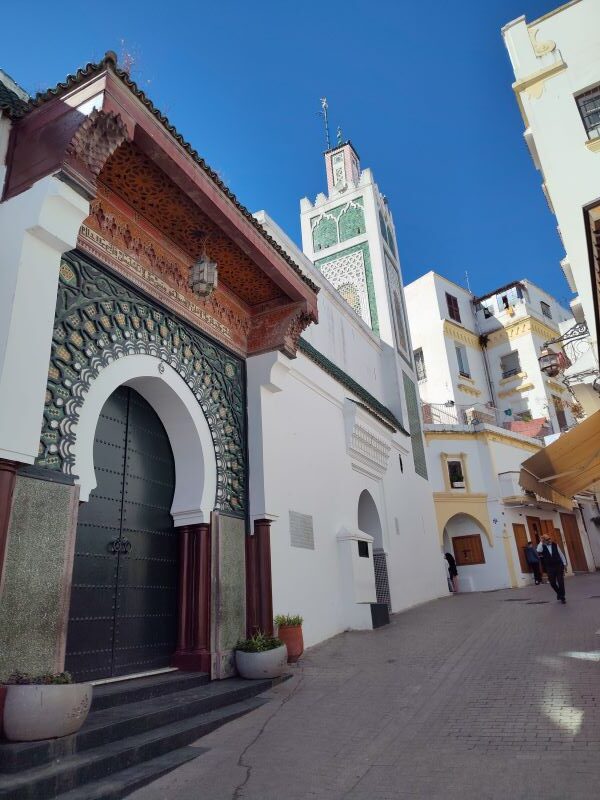
9. Grand Mosque and Petit Socco
The Grand Mosque of Tangier stands near the heart of the old medina, built on the site of a former Roman temple and later a Portuguese cathedral, reflecting the city’s layered past. Though non-Muslims cannot enter, the mosque’s whitewashed walls and elegant minaret are easy to admire from the outside as you explore nearby streets. Just steps away is Petit Socco, a small but lively square that was once a gathering place for diplomats, traders, and writers. Today, it’s a relaxed spot lined with cafés and old hotels, offering a glimpse into Tangier’s cosmopolitan past and a quiet place to take in the atmosphere of the medina.
- The mosque stands out with its minaret and history
- Petit Socco square offers a quieter medina atmosphere with old-world charm
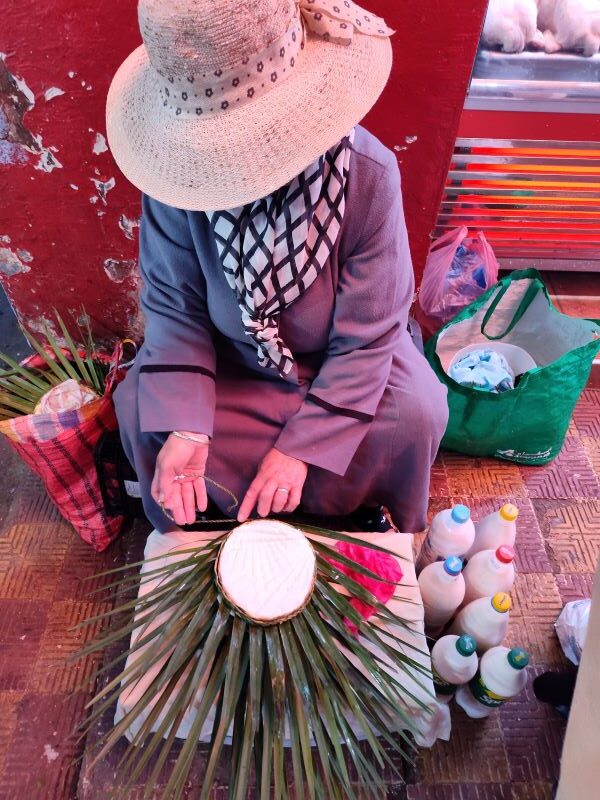
10. Shopping for Local Goods and crafts
Shopping in Tangier is a rich and immersive experience, especially within the medina’s winding alleys and bustling souks. The Grand Socco and Petit Socco are central hubs where you can find a variety of traditional Moroccan goods. Artisans offer handwoven textiles, including vibrant Berber rugs and Rif blankets, often crafted on centuries-old looms at places like Fondouk Chejra. Leather goods are abundant, with shops showcasing items such as babouches (traditional slippers), bags, and jackets, particularly along Rue Mouahidines and at Boutique Majid. Ceramics, from hand-painted tagines to decorative bowls, are also popular finds.
Spice vendors fill the air with the aromas of saffron, cumin, and Ras el Hanout, while stalls offer local delicacies like olives, preserved lemons, and mint tea sets. For those interested in jewelry, the medina’s Rue Touahine is known for its silver pieces and amber accessories. Haggling is a customary part of the shopping experience, so engaging in friendly negotiation is expected. For a more relaxed shopping environment with fixed prices, the Ensemble Artisanal on Rue M’sallah offers a range of authentic crafts.
- Browse for Moroccan rugs, leather goods, ceramics, and traditional clothing
- Bargain with vendors in souks for a more local experience
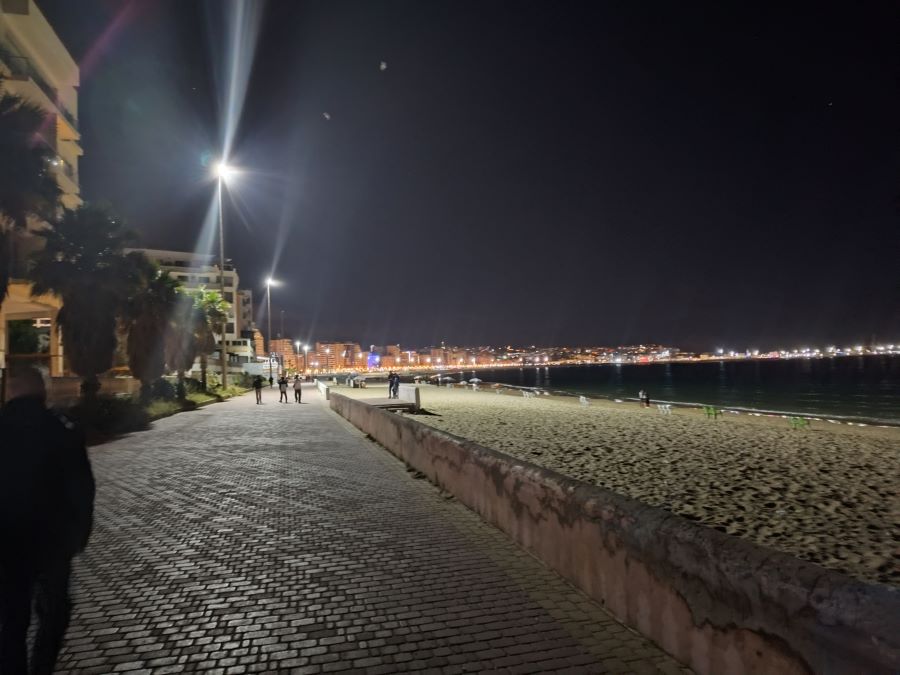
11. Enjoy Sunset and a night along the waterfront area
Later in the afternoon the waterfront area of Tangier is festive and breezy with locals outdoors taking walks, enjoying the beach areas or waiting for the sunset timeframe. It’s also a great time to check out all the local eateries along the waterfront area offering all different types of traditional foods, seafood specialties to more international cuisine to enjoy.
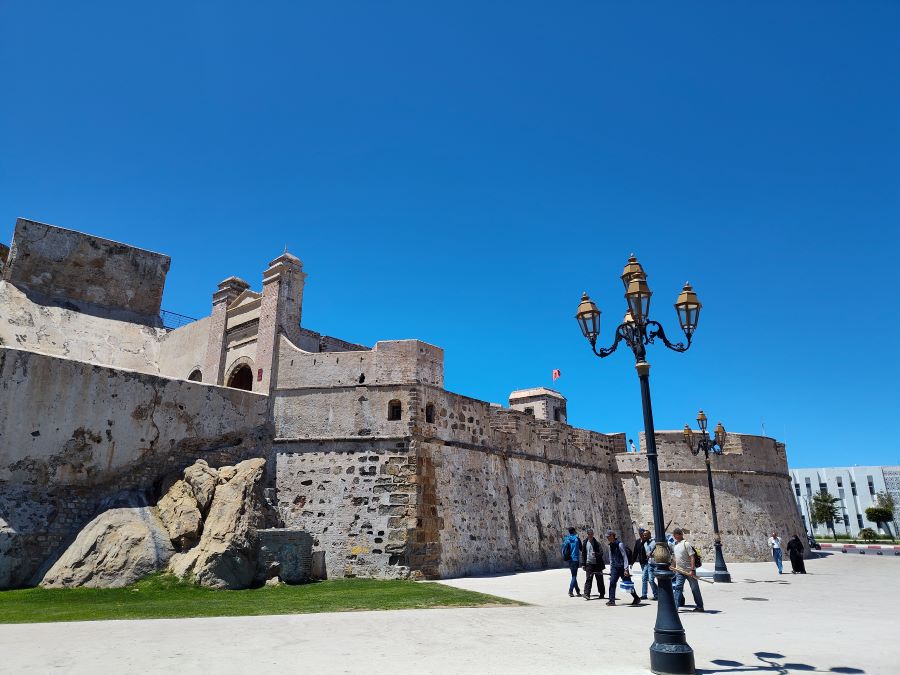
12. Explore the main fortress and cannons of Tangier
The fortress walls of Tangier, especially around the Kasbah and parts of the medina, still show signs of the city’s strategic military past. Along the edges, particularly near the sea-facing cliffs, you’ll find old cannons positioned to overlook the Strait of Gibraltar—reminders of the city’s role in guarding the entrance to the Mediterranean. These cannons, some dating back to the Portuguese and later European periods, are scattered along the ramparts and viewpoints, adding a historic layer to the sweeping coastal views. It’s a quiet but striking feature that blends Tangier’s natural setting with its defensive legacy.
Located just off the main waterfront thoroughfare and accessible to the Hop on Hop off bus, the entrance to the fortress area and canons is relatively easy with English placards and dioramas to enjoy along with nice views to the coastline and Straights of Gibraltar.
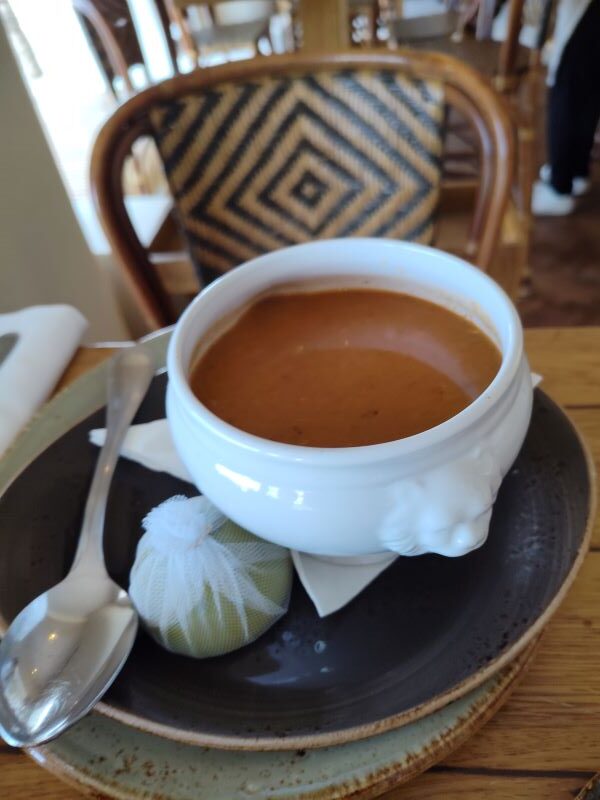
13. Enjoy traditional local cuisine from Tangier
If you are looking for more traditional foods from Tangier and the area, consider some of these dishes you’ll see on menus around the Old Town and other venues around the city.
1. Moroccan Tagines
- Slow-cooked stews made with meat, poultry, or fish
- Often includes vegetables, olives, preserved lemons, or dried fruits
- Popular options: chicken with olives and lemon, lamb with prunes
2. Couscous
- Staple Friday dish in many Moroccan homes
- Steamed semolina grains served with vegetables and meat
- Often garnished with chickpeas and caramelized onions
3. Fresh Seafood
- Tangier’s coastal location means plenty of seafood options
- Try grilled sardines, calamari, or fish tagines
- Head to the port or local seafood restaurants for the freshest catches
4. Harira Soup
- Traditional soup made with tomatoes, lentils, chickpeas, and meat
- Commonly eaten during Ramadan but available year-round
5. Moroccan Mint Tea
- Sweet green tea infused with fresh mint
- Served with ceremony and often paired with pastries or snacks
6. Local Pastries and Breads
- Try msemen (layered flatbread), harcha (semolina bread), and sfenj (Moroccan doughnuts)
- Often sold by street vendors or at local bakeries
7. Street Food Favorites
- Bocadillos (Moroccan sandwiches) with fried fish, egg, or spiced meat
- Maakouda (fried potato cakes) served in bread with spicy sauce
- Fresh orange juice and sugarcane juice from medina stalls
8. Visit a Traditional Riad or Family-Owned Restaurant
- Enjoy home-style meals in a traditional Moroccan setting
- Many offer set menus with appetizers, main courses, and dessert
9. Sweet Treats
- Chebakia (sesame-coated honey pastries), almond briouats, and date-filled cookies
- Often served with tea or during special occasions
10. Experience a Food Market or Souk
- Explore fresh produce, spices, olives, nuts, and preserved goods
- Great for tasting ingredients or picking up snacks and souvenirs
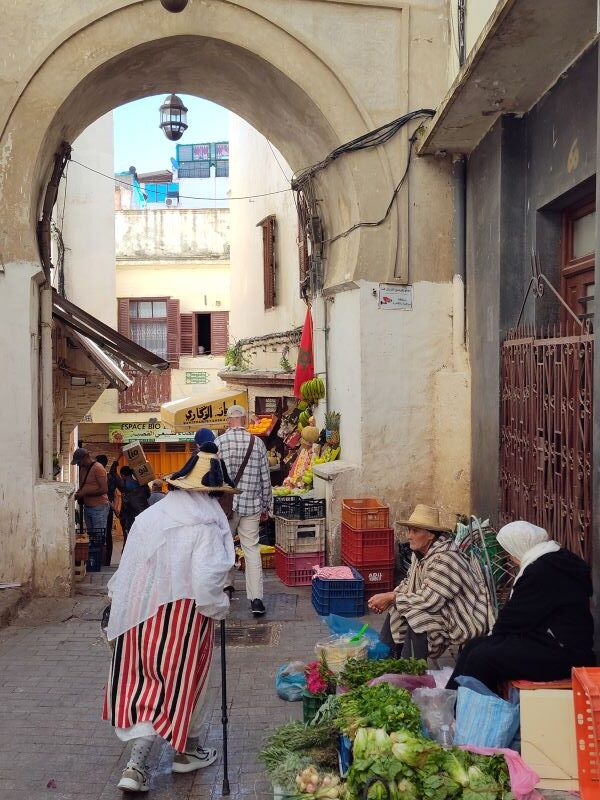
14. Explore Tangier’s public marketplaces
I. Overview of Tangier’s Market Scene
A. Tangier’s markets blend Moroccan, Andalusian, and colonial influences
B. Spread across the medina (old town), kasbah, and newer districts
C. Known for their daily rhythm, local color, and variety of goods
II. The Grand Socco (Place du 9 Avril 1947)
A. Central hub linking the old medina with the modern city
B. Not exactly a market, but surrounded by street vendors and shops
C. Good for: people-watching, fresh produce stalls, cafés, and access to other markets
III. Petit Socco (Souk Dakhel)
A. Historic square inside the medina
B. Once a gathering point for traders, spies, and expats
C. Now home to small cafés, antique shops, and boutique stalls
D. Quieter than Grand Socco, with more character
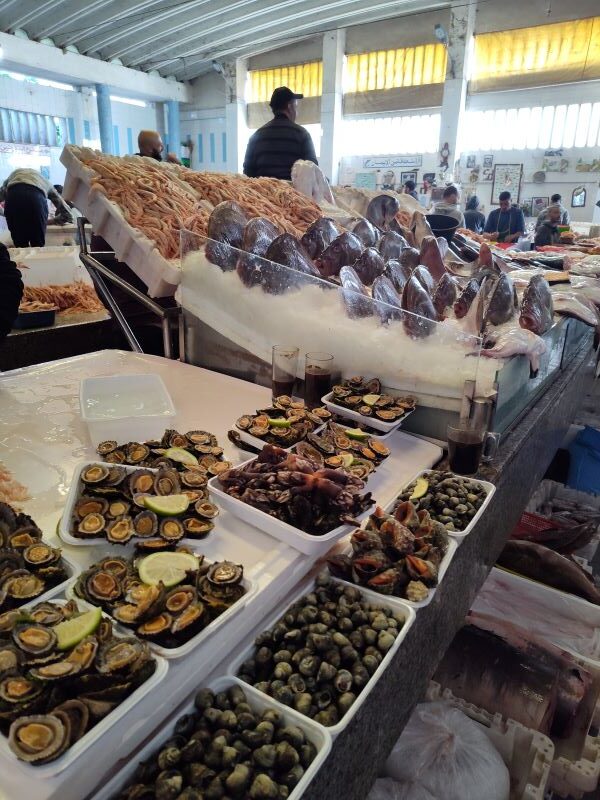
IV. Central Market (Marche Central / Souk el Ghezal)
A. Main indoor market in Tangier
B. Sections include:
1. Fresh fish and seafood
2. Fruits, vegetables, herbs, and spices
3. Meat and poultry
C. Authentic place to see locals shop and haggle
D. Ideal for photographers and food lovers
V. Souk Barra (Dry Goods Market)
A. Specializes in textiles, clothing, household goods, and traditional Moroccan attire
B. Some stalls offer handwoven rugs, djellabas, and slippers (babouches)
C. Affordable place to browse for functional and decorative items
VI. Kasbah Artisan Markets
A. Located in the high part of the medina, near the Kasbah Museum
B. Focus on handicrafts: leather, woodwork, jewelry, ceramics
C. Less chaotic, geared more toward visitors but still with local flair
VII. Street Vendors and Pop-up Stalls
A. Found along side streets and alleyways, especially near city gates
B. Sell everything from fresh mint and olives to mobile phone covers
C. Best experienced on foot, without a set itinerary
VIII. Practical Tips
A. Bargaining is expected, but keep it respectful
B. Morning is the busiest and liveliest time to visit
C. Watch your valuables—markets can be crowded
D. Bring small change (dirhams) for purchases
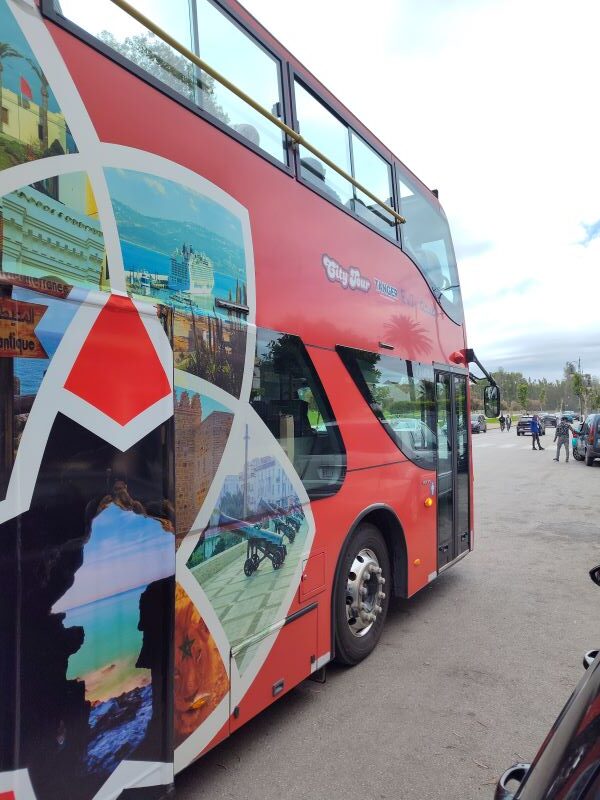
15 Take a Guided Tour
There’s so much to see and do here in Tangier, it would be so much easier with a guided tour and driver to handle all the logistics, parking and places to discover. Here are some recommendations to tours from day tours to easier Hop on Hop off tours.
Discover Tangier at your own pace with a double-decker hop-on hop-off bus. Get on and off all day long with the same ticket, and learn about the city through a comfortable audio system.
Explore the city of Tangier on Morocco’s northern coast and learn about the civilizations that have helped shape the port city, from the Romans to the Moors, via the Arabs, French and Portuguese.
Tangier: Cap Spartel and Hercules Caves Trip with Camel Ride
Discover Tangier’s highlights on a small group tour. Visit Cap Spartel, explore Hercules Caves, and enjoy a scenic camel ride along the Atlantic coast for an unforgettable Moroccan experience.
From Tarifa: Tangier Full-Day Trip with Lunch
Embark on a full-day trip to the historical city of Tangier from Tarifa. Marvel at city and rural highlights on a guided minibus tour, including the Caves of Hercules, and enjoy a delicious lunch.
Conclusion to visiting Tangier
Visiting Tangier offers a unique mix of history, culture, and coastal charm that sets it apart from other Moroccan cities. From wandering the lively medina and exploring centuries-old fortresses to relaxing by the sea or sampling fresh seafood and mint tea, the city invites you to slow down and take it all in. Whether you’re drawn to its artistic legacy, its mix of European and Moroccan influences, or just the everyday scenes of local life, Tangier leaves a lasting impression. So if you’re looking for a destination that’s rich in stories and full of character, start planning your trip to Tangier—it’s worth getting to know.
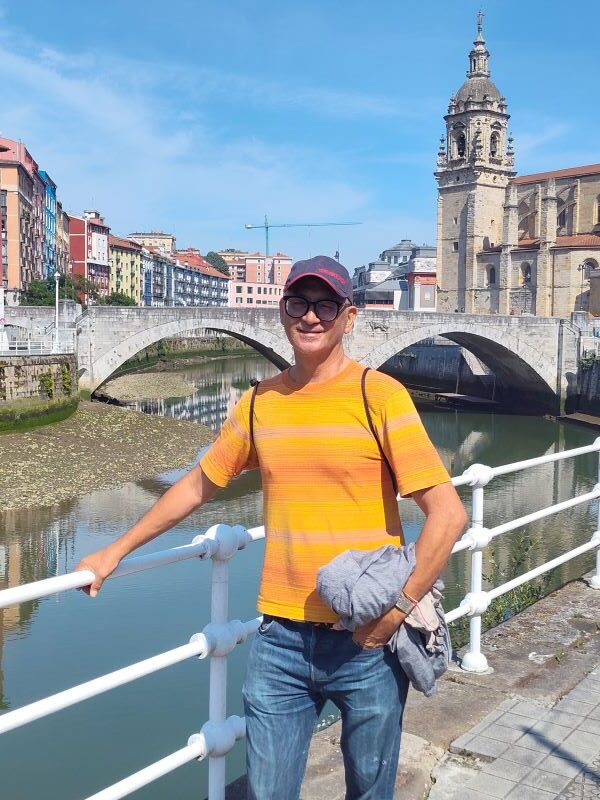
About author – Noel Morata
After relocating from the United States to Andalusia in 2024, I’ve made it my mission to discover every corner of Spain along with many Mediterranean locations, cities and attractions. Based just east of Granada, I’ve spent a lot of time visiting Morocco including multiple extended visits to Marrakesh, Tangier and different parts of the country throughout different seasons. My background in history cultural studies and years of residence and exploring all of the Mediterranean countries have given me unique insight into the region’s historical significance, local customs, and culinary traditions.
I regularly update my guides with the latest information gathered through personal visits and relationships with local tourism officials, always seeking what’s new and exciting in each destination. As a self-proclaimed foodie, I’m passionate about discovering authentic local markets and regional specialties.
Disclosure – some of the links above to various tours, transportation and hotels are affiliate links that benefits our site if you book here and we appreciate your support. The links are competitive, and you are not paying above what other affiliates provide.
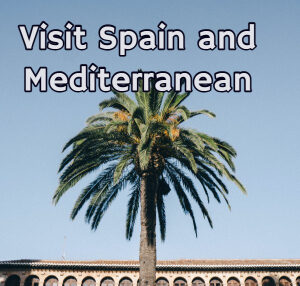
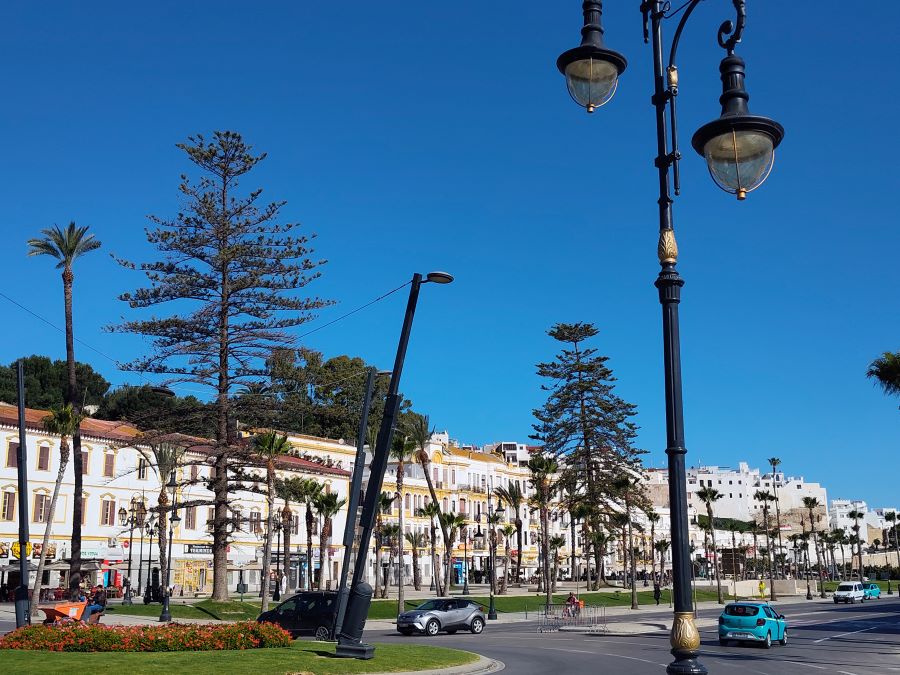
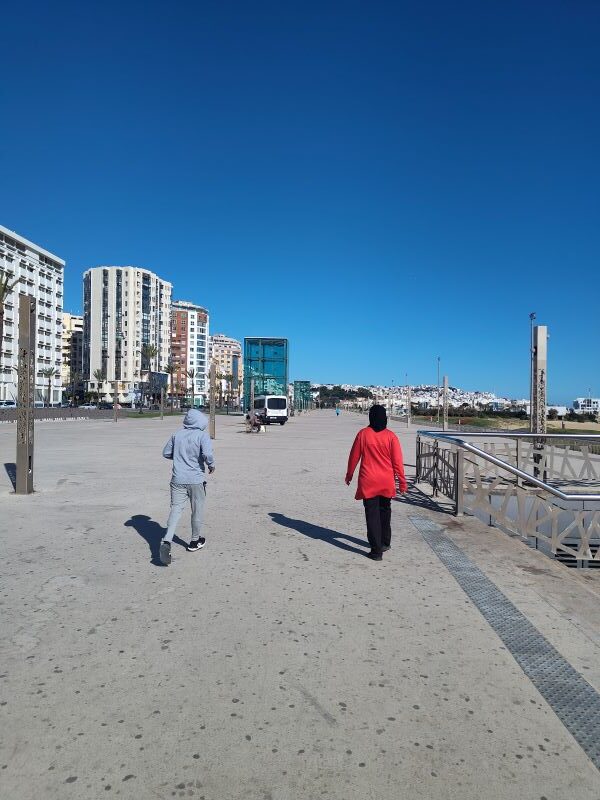
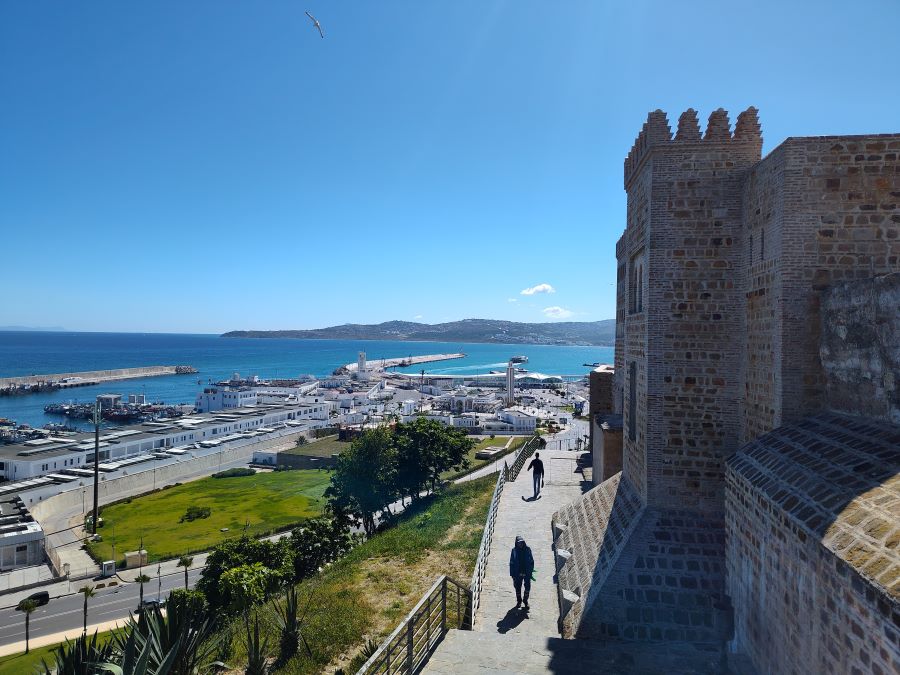
6 thoughts on “tangier things to do”